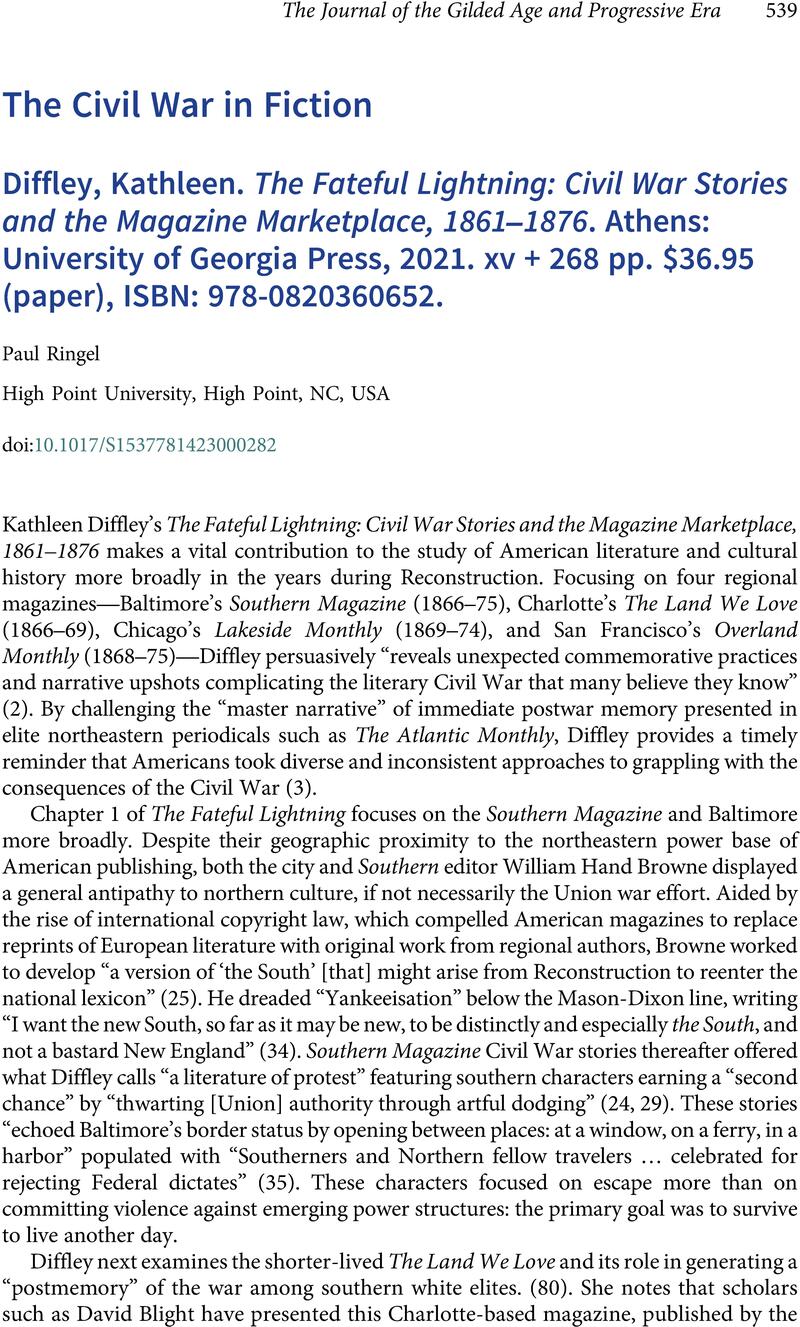No CrossRef data available.
Article contents
The Civil War in Fiction - Kathleen Diffley. The Fateful Lightning: Civil War Stories and the Magazine Marketplace, 1861–1876. Athens: University of Georgia Press, 2021. xv + 268 pp. $36.95 (paper), ISBN: 978-0820360652.
Review products
Kathleen Diffley. The Fateful Lightning: Civil War Stories and the Magazine Marketplace, 1861–1876. Athens: University of Georgia Press, 2021. xv + 268 pp. $36.95 (paper), ISBN: 978-0820360652.
Published online by Cambridge University Press: 15 December 2023
Abstract
An abstract is not available for this content so a preview has been provided. Please use the Get access link above for information on how to access this content.

- Type
- Book Reviews
- Information
- Copyright
- © The Author(s), 2023. Published by Cambridge University Press


